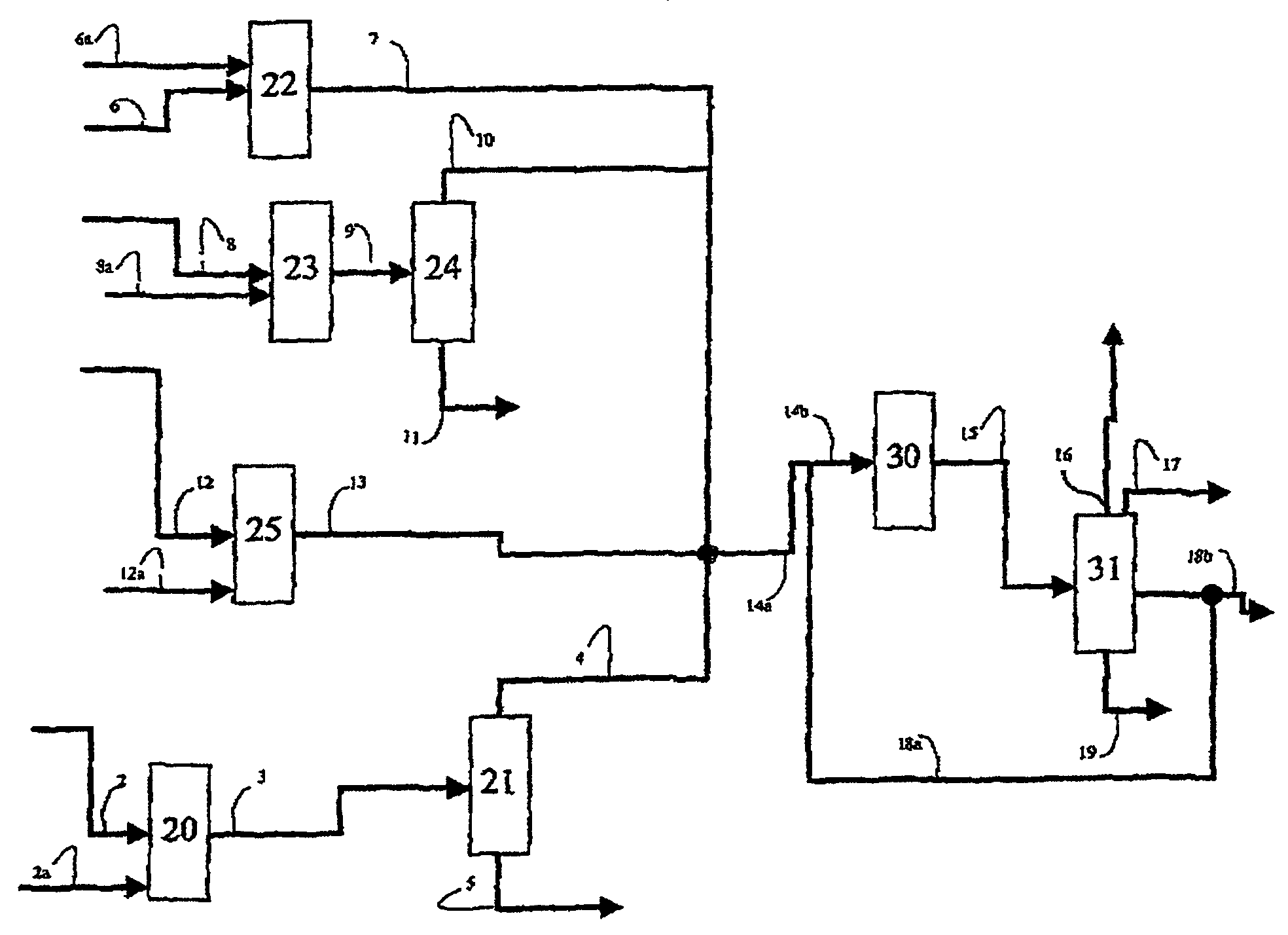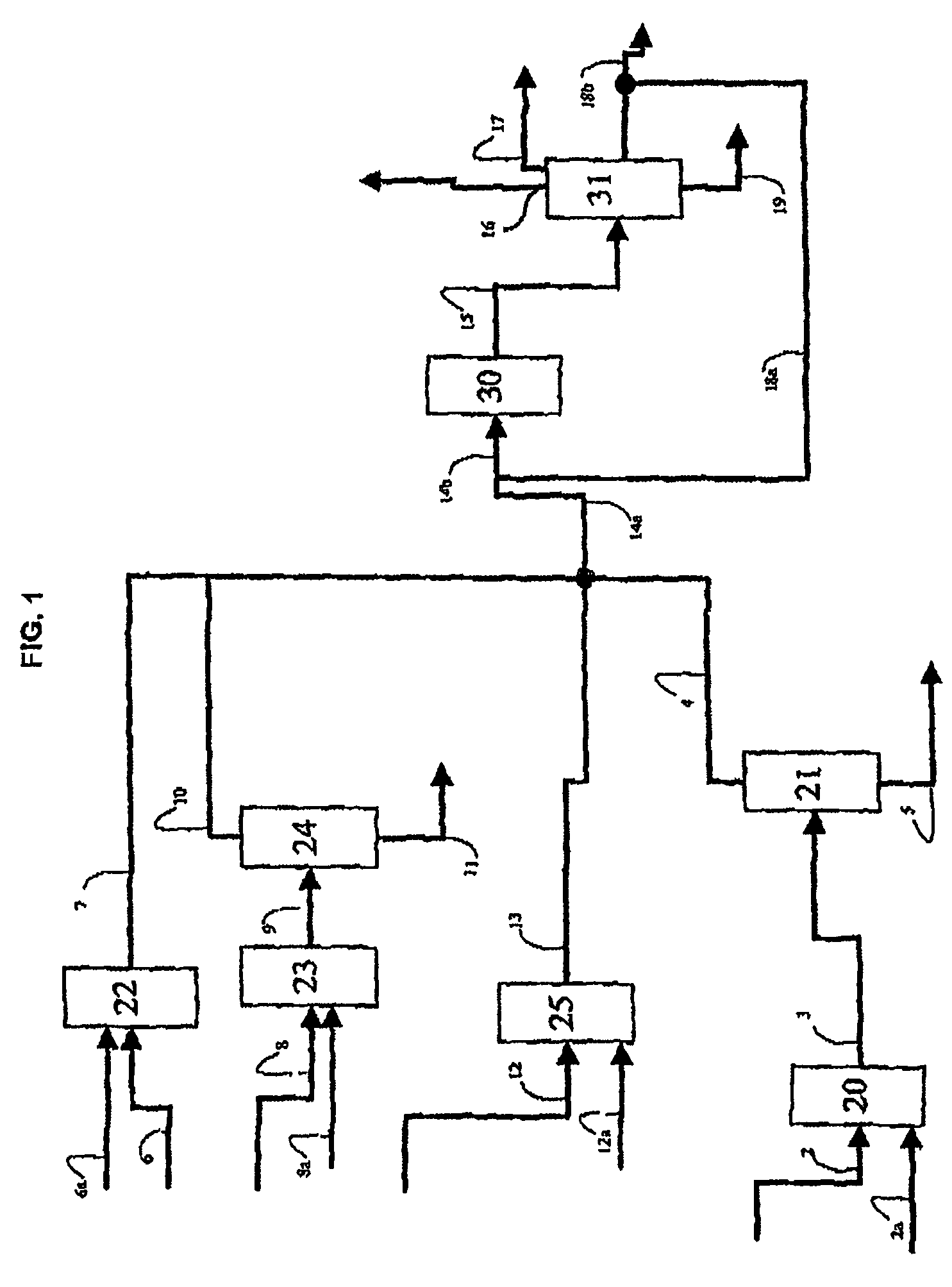Process for producing propylene in the presence of a macroporous catalyst in the form of spherical beads
a macroporous catalyst and propylene technology, applied in the direction of molecular sieve catalyst, hydrocarbon oil treatment, hydrocarbon preparation, etc., can solve the problems of high investment cost, large catalyst loss, and relatively difficult process
- Summary
- Abstract
- Description
- Claims
- Application Information
AI Technical Summary
Benefits of technology
Problems solved by technology
Method used
Image
Examples
example 1 (
INVENTION)
Preparation of catalyst C1 with a Porogen Content of 2.0% by Weight
[0056]An emulsion was prepared by introducing 244 g of water, 49 g of porogen constituted by isane and 2.9 g of surfactant constituted by galoryl into a one litre beaker. The mixture was stirred at 500 rpm for 15 minutes.
[0057]A suspension was prepared by introducing 2198 g of permutated water and 69 g of 59.68% by weight nitric acid into a 4 litre beaker, the mixture being stirred at 400 rpm for 5 min. 450 g of PURAL SB3 (loss on ignition=26.10%) was then added and the mixture (permutated water, nitric acid and PURAL SB3) was stirred at 1600 rpm for 14 minutes. 332 g of ZSM-5 zeolite in the H form with a Si / Al ratio of 140, sold by Zeolyst, was then added to the mixture (permutated water, nitric acid and PURAL SB3); the resulting mixture was stirred at 1600 rpm for 3 minutes then the emulsion formed from the water, the isane and the galoryl was added to said mixture. This was all stirred at 1600 rpm for 13...
example 2 (
INVENTION)
Preparation of Catalyst C2 with a Porogen Content of 4.0% by Weight
[0059]An emulsion was prepared by introducing 247 g of water, 99 g of porogen constituted by isane and 5.9 g of surfactant constituted by galoryl into a one litre beaker. The mixture was stirred at 500 rpm for 15 minutes.
[0060]A suspension was prepared by introducing 2219 g of permutated water and 73 g of 59.68% by weight nitric acid into a 4 litre beaker, the mixture being stirred at 400 rpm for 5 min. 450 g of PURAL SB3 (loss on ignition=26.10%) was then added and the mixture (permutated water, nitric acid and PURAL SB3) was stirred at 1600 rpm for 14 minutes. 343 g of ZSM-5 zeolite in the H form with a Si / Al ratio of 140, sold by Zeolyst, was then added to the mixture (permutated water, nitric acid and PURAL SB3); the resulting mixture was stirred at 1600 rpm for 3 minutes then the emulsion formed from the water, the isane and the galoryl was added to said mixture. This was all stirred at 1600 rpm for 13...
example 3 (
INVENTION)
Preparation of Catalyst C3 with a Porogen Content of 7.5% by Weight
[0062]An emulsion was prepared by introducing 249 g of water, 187 g of porogen constituted by isane and 11.2 g of surfactant constituted by galoryl into a one litre beaker. The mixture was stirred at 500 rpm for 15 minutes.
[0063]A suspension was prepared by introducing 2243 g of permutated water and 68 g of 59.68% by weight nitric acid into a 4 litre beaker, the mixture being stirred at 400 rpm for 5 min. 450 g of PURAL SB3 (loss on ignition=26.10%) was then added and the mixture (permutated water, nitric acid and PURAL SB3) was stirred at 1600 rpm for 14 minutes. 339 g of ZSM-5 zeolite in the H form with a Si / Al ratio of 140, sold by Zeolyst, was then added to the mixture (permutated water, nitric acid and PURAL SB3); the resulting mixture was stirred at 1600 rpm for 3 minutes then the emulsion formed from the water, the isane and the galoryl was added to said mixture. This was all stirred at 1600 rpm for ...
PUM
| Property | Measurement | Unit |
|---|---|---|
| pore size | aaaaa | aaaaa |
| diameter | aaaaa | aaaaa |
| diameter | aaaaa | aaaaa |
Abstract
Description
Claims
Application Information
 Login to View More
Login to View More - R&D
- Intellectual Property
- Life Sciences
- Materials
- Tech Scout
- Unparalleled Data Quality
- Higher Quality Content
- 60% Fewer Hallucinations
Browse by: Latest US Patents, China's latest patents, Technical Efficacy Thesaurus, Application Domain, Technology Topic, Popular Technical Reports.
© 2025 PatSnap. All rights reserved.Legal|Privacy policy|Modern Slavery Act Transparency Statement|Sitemap|About US| Contact US: help@patsnap.com


